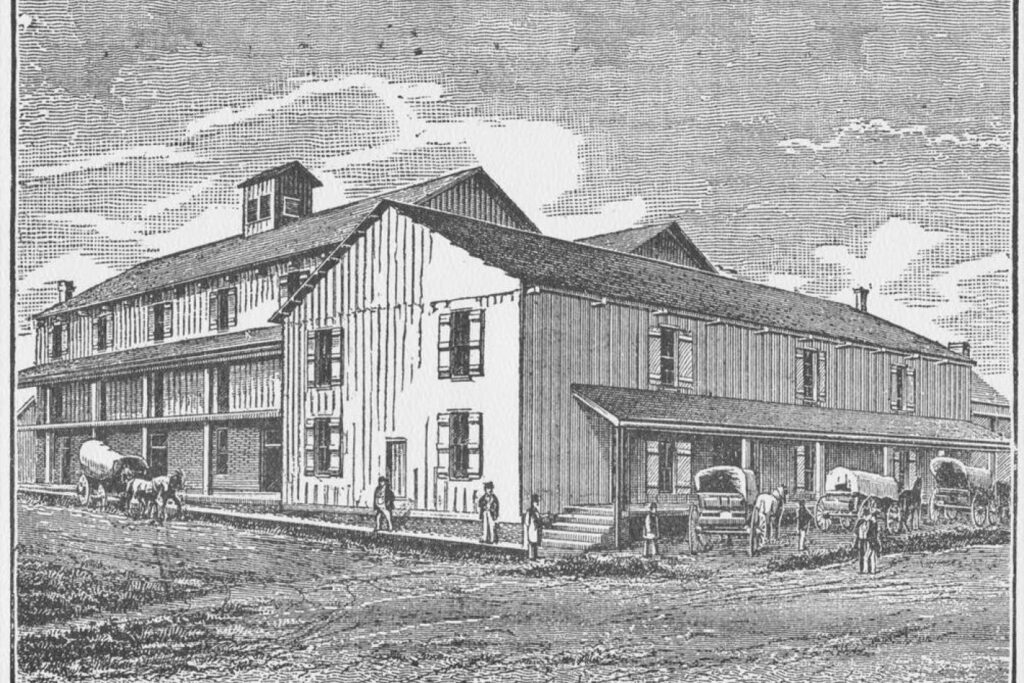
Special to Iredell Free News
A Statesville business that was the largest herbarium in the world soon will be recognized with a North Carolina Highway Historical Marker.
Established by Jewish immigrants David and Isaac Wallace in 1859 as a retail and wholesale mercantile house in Statesville, the Wallace Brothers Herbarium was located at the corner of Meeting and Walnut streets. Along with botanist Mordecai E. Hyams, their business specialized in medicinal herbs, barks, berries, and roots often bartered from customers in exchange for merchandise. By 1890, the business had grown to 40,000 square feet in size and was processing more than 2,000 varieties of herbal ingredients.
The marker commemorating the Wallace Brothers Herbarium will be dedicated Sunday, October 15, at 1 p.m., at 300 S. Center Steet, Statesville, N.C., adjacent to the Statesville Civic Center. A reception at the Congregation Emanuel Synagogue will follow the unveiling ceremony. All are invited.
With Hyams’ help, the Wallace Brothers Herbarium saw success and acclaim on a national and international level. A Wallace herb display was the centerpiece of the North Carolina exhibits at the 1876 Centennial Exhibition in Philadelphia and the 1878 Paris Exposition, winning gold medals at each. They also exhibited at the 1893 Chicago World Fair and the 1904 St. Louis World Fair.
The success of the herbarium and the herb trade helped keep rural North Carolinians afloat during the economic panic of the 1870s. The company gave work to “women, children, and maimed or broken down men” and David Wallace was described as “a friend at all times to every call of the poor and needy.”
However, in 1895 the Wallace Brothers went bankrupt. The company was saved by an investor from New York with the Wallace brothers and family retained as employees, but this marked the end of the Wallaces’ monopoly on the market. The brothers died within the next decade, and their descendants carried on the company into the mid-20th century.
Although the advent of synthetic drugs has largely reduced the demand for herbal remedies, the legacy left on North Carolina by the Wallace brothers and Hyams and the field of botany continues today. Hyams’ efforts helped to foster and preserve a long-standing tradition of cultivating native botanicals in North Carolina. Likewise, Harvard botanists credit Hyams with identifying 166 new varieties of flora in North Carolina, including the rediscovery of a rare plant, Shortia galacifolia, and ascertaining its location within McDowell County. Among the institutions holding Wallace specimens in their botanical collections are the Smithsonian Institution, Harvard University, UNC-Chapel Hill, and numerous North Carolina museums.




Great story and good to know it will continue to be recognized for all generations to come … my mother as a child remembers picking wild herbs and going with her father in the horse and buggy to take them to town to barter … her name was Helen Payne(Lentz) and her father was Lonnie Payne and they lived on Chipley Ford Road near Fort Dobbs.
We also list the Eupiptic Springs site. It was a mineral springs bath and healing site.
When I was a student at Mitchell Community College in the early 1980s I heard that Wallace House (housing the college’s Art Department) was the family home of these same Wallaces and that their herb gardens were on part of the current college property.